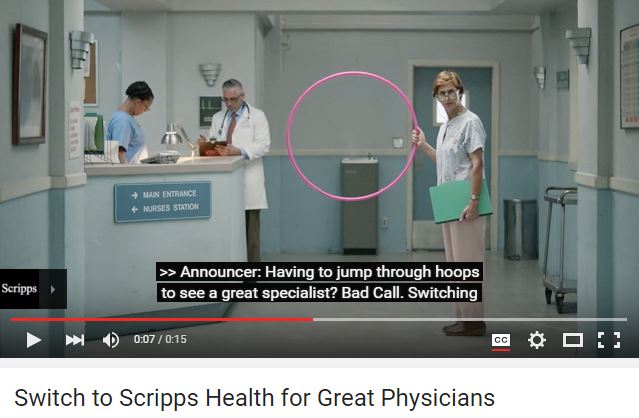Humor and Health Do Not Mix. (Or Maybe It’s What We Need!)
In the healthcare industry communications, humor is not used. In real life, it often is what makes us all most human and able to deal with the health crisis thrown our way.

Are there examples of humor used today which will make it inevitable strategy in your future communications? (Yes!) As people look to humanize what looks to be an increasingly cold and 'by-the-clock' healthcare with technology sprouting up at every turn, perhaps brands should consider the use of humor as a form of empathy, the ultimate way to bond with a customer.
Sickness, disease, health in general, is anything but humorous. Attempting to make a joke or take health lightly is an approach all of us — especially brands — know can be a dangerous strategy. While no Biopharma company would get near humor as a marketing strategy, another sector of healthcare is attempting to break the mold for patient acquisition.
Still, many doctors would tell you that humor is a can be a sanity-saver given the pressures of a health crisis, or chronic disease:
As helpguide.org states:
Laughter is good for your health
- Laughter relaxes the whole body. A good, hearty laugh relieves physical tension and stress, leaving your muscles relaxed for up to 45 minutes after.
- Laughter boosts the immune system. Laughter decreases stress hormones and increases immune cells and infection-fighting antibodies, thus improving your resistance to disease.
- Laughter triggers the release of endorphins, the body’s natural feel-good chemicals. Endorphins promote an overall sense of well-being and can even temporarily relieve pain.
- Laughter protects the heart. Laughter improves the function of blood vessels and increases blood flow, which can help protect you against a heart attack and other cardiovascular problems.
One sector of healthcare that has evolved from minor-league marketing to full-fledged competitive strategies that boast of new doctors, new equipment, new specialties. You see it on billboards, local TV, even on the radio with the same strategy: ” Our hospital is the best at (fill-in-the-blank)!” But, as they say, this approach is over used and under-whelming at best.
While a majority of current hospital patient acquisition/brand strategies seem functional at best a few are breaking the mold. One hospital network in the Northwest, GroupHealth (recently purchased by Kaiser Permanente) used humor in a recent TV and YouTube campaign to acquire new patients — and it worked!
In the ever-changing healthcare marketing landscape, hospitals were always the laggards. Traditionally, they did not as a category advertise: they just let patients come to them. Now, to be competitive they are becoming more innovative than Biopharma companies in many ways — even innovative in using acquisition strategies alien to their “culture”. And using humor is almost heresy! Yet, it works. GroupHealth set themselves apart and has been successful.
Another hospital network using humor to attract new patients and set themselves apart as a brand is Scripps.
https://youtu.be/u62MRTmFz1M

The marketing maturation of any sector is always interesting to watch — the marketing learning curve for healthcare is occurring in fits and starts. In this case, hospitals are starting to break new ground that other brandshould consider.
Empathy, which is at the core of great branding and advertising, includes laughter and consumers are going to expect it in the health world; perhaps it may not be something a brand would use in DTC, but it could have a major impact on unbranded digital work or as ongoing content for eCRM programs supporting patients and caregivers.
This further supports why employees of hospitals, Biopharma manufacturers, etc., need to be give voice to their passion and dedication to their employer, their treatment, and communicate human-to-human, thus creating the impact the brand needs in this age of dis-connection.
Laughter may be the best medicine, but who delivers it and how it is delivered, makes all the difference. Next post will be on empathy-software.